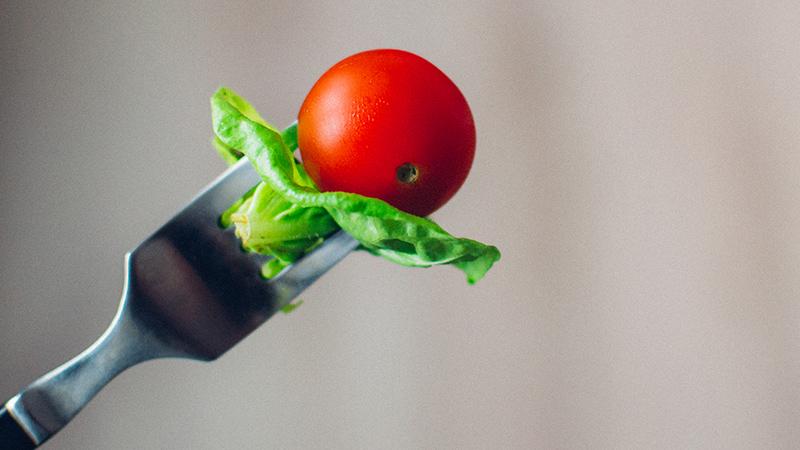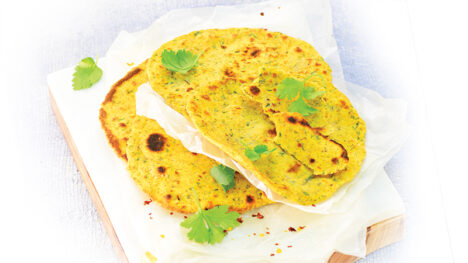What are plant-based diets?
January 31, 2017

Plant-based diets are a growing trend, but what, exactly, are they?
Kinds
There are many kinds of plant-based diets, from contemporary to traditional. There are Mediterranean, Asian and rural African diets, which limit the frequency or quantity of meats and/or dairy but are not strictly vegetarian. Six kinds of vegetarian diets are common in Western countries today:
Semi-vegetarian. Red meat, poultry and fish are restricted from once per month to no more than once per week. There is no limit on eggs and dairy.
Pesco vegetarian. Red meat and poultry are consumed less than once per month, but some fish and/or seafood are consumed more often.
Lacto-ovo vegetarian. Red meat, poultry and fish are excluded, but variable amounts of eggs and/or dairy may be consumed.
Vegan. A vegan diet is 100 per cent plant-based, meaning no meats, dairy, fish or eggs. Very strict vegans may even abstain from honey and the use of leather, depending on the reason for the veganism. The term vegan is often a code word for a whole way of life.
Macrobiotic. The macrobiotic diet centres on whole grains such as brown rice supplying 50 to 60 per cent of each meal, with plenty of vegetables and some beans (or soy products). Meat, poultry, eggs and dairy are usually excluded, but seafood is consumed up to several times per week.
Raw. Raw plant-based diets avoid cooking with heat and use other innovative preparation techniques to make foods more palatable and digestible. They are most commonly vegan and include 75 per cent or more raw food by weight.
How you can benefit
Plant-based diets have been linked to a lower rate of obesity, type 2 diabetes, heart disease and certain cancers, and even to greater longevity. What they share in common is that all or a majority of what fills your plate comes from plants. You reap the most benefits when these plants are unrefined.
Cauliflower steaks with sauce
A healthy, nutritious alternative to meat. Cauliflower is a great source of fibre and high in vitamin C. A perfect vegetable centrepiece, especially for those with insulin resistance, diabetes or high cholesterol.
Preparation time: 15 minutes | Cooking time: 30 minutes | Serves: 4
Ingredients
- 1 whole cauliflower (approx. 1 kg)
- 1 ½ tsp ground coriander
- 1 ½ tsp ground cumin
- ¾ tsp freshly ground pepper
- 3 tbsp extra virgin olive oil
- ¼ cup blanched almonds
- 1⁄8 cup sesame seeds
- ¼ tsp sea salt
Tahini sauce:
- 2 ½ tbsp tahini
- 2 ½ tbsp lemon juice
Method
- Preheat oven to 180°C and line a large baking tray with baking paper.
- Remove leaves from cauliflower and cut off stem. Stand cauliflower upright on its base and using a large knife, cut 4 steaks around 2 cm thick, from the middle. Note: steaks may weigh 140 g to 210 g each, depending whether they are from a medium or large cauliflower.
- Take 1 tsp each of the coriander and cumin and ½ tsp of the pepper and blend with 1 tbsp of the olive oil in a small bowl. Set aside.
- Heat 1 tbsp of the olive oil in a large non-stick pan and fry 2 cauliflower steaks at a time over medium heat for 2 minutes on each side or until golden brown. Transfer cauliflower steaks onto baking tray. Repeat with remaining steaks and oil.
- Brush over the seared steaks with the oil and spice mixture from step 3. Roast in the oven for 15 minutes or until cauliflower is cooked through.
- Meanwhile, dry toast the almonds and sesame seeds, separately, in a small pan for 1 minute or until lightly coloured. Roughly grind the almonds in a mortar and pestle then mix with the seeds and remaining spices (½ tsp ground coriander; ½ tsp ground cumin; ¼ tsp ground black pepper; ¼ tsp sea salt) to make ‘dukkah’. Set aside.
- Blend tahini sauce ingredients with 2 tablespoons water in a small bowl until smooth and creamy. Add more water if the tahini is very thick.
- Serve cauliflower steaks scattered with dukkah and drizzled with tahini sauce. ‘Steaks’ pair up well with steamed whole grains and a salad.













